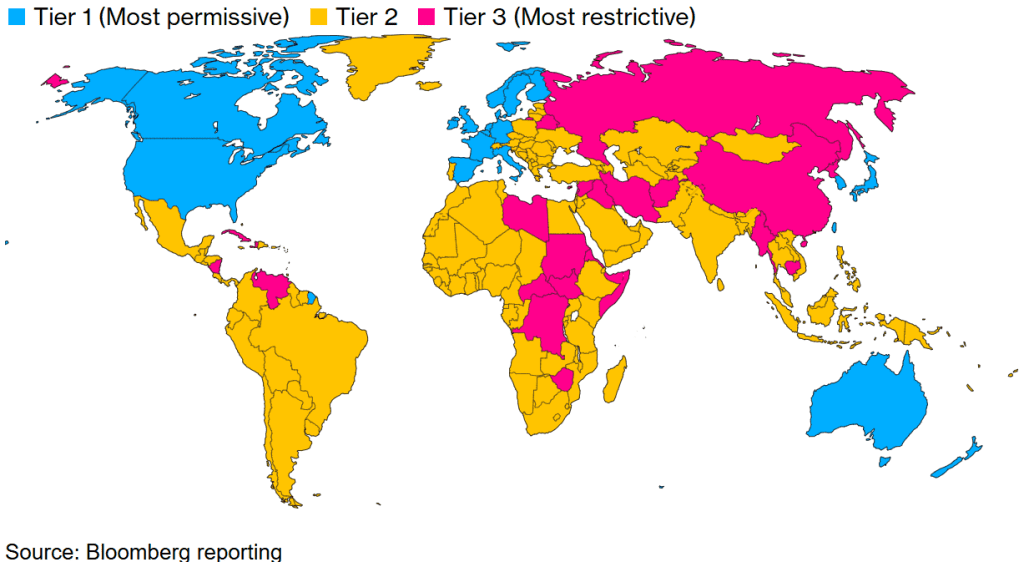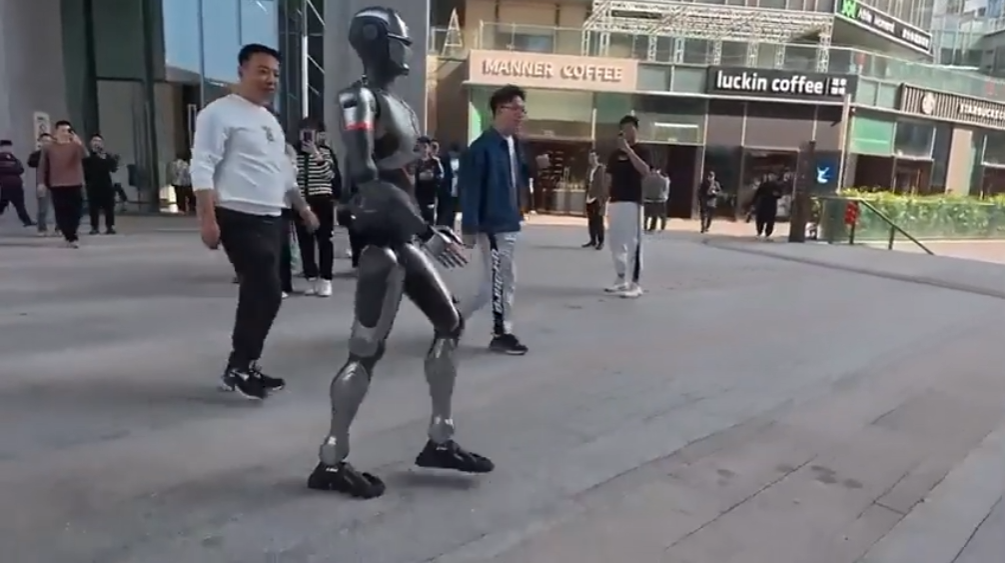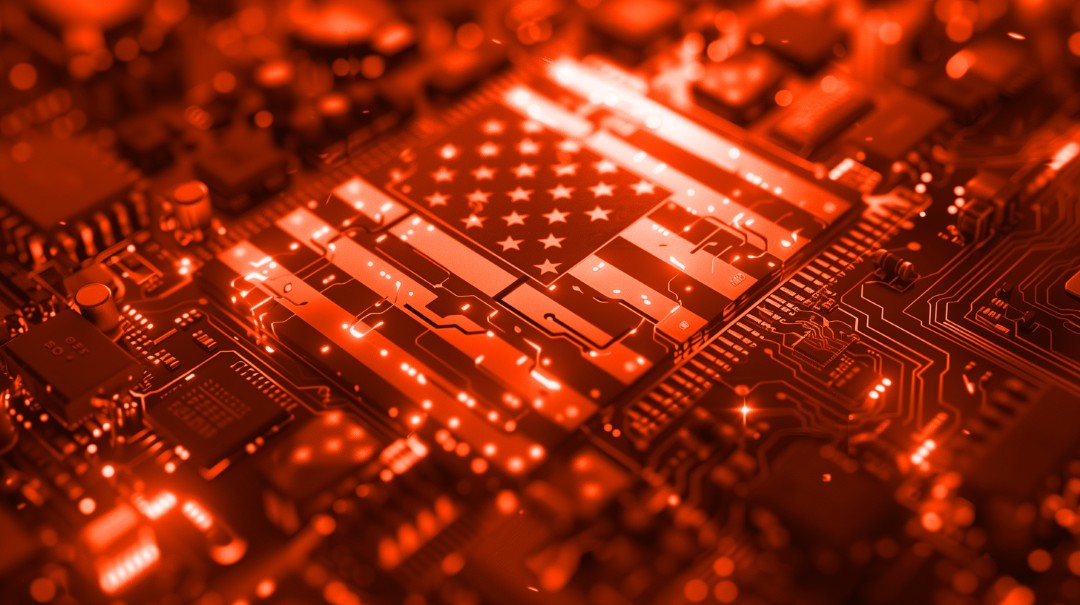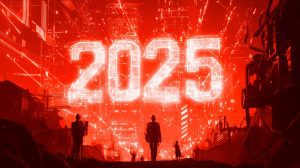Welcome to our weekly news post, a combination of thematic insights from the founders at ExoBrain, and a broader news roundup from our AI platform Exo…
Themes this week

JOEL
This week we look at:
- The Biden administration’s new three-tier system for controlling global AI compute access.
- How AI is set to reshape 200,000 Wall Street jobs.
- China’s push to deploy 1 million humanoid robots and the rise of ‘physical AI’.
A new form of American power
Days after Nvidia launched new hardware at the CES show in Las Vegas, the outgoing Biden administration announced further controls on advanced GPU sales worldwide. The policy extends beyond China to create three tiers of access, managing not just hardware but also the computing power needed to fine-tune advanced AI – a likely response to 2024’s breakthroughs in reasoning models like OpenAI’s o1 (and o3 demonstrated at the end of last year showing unprecedented capability in software engineering and mathematics).

The US has long wielded three tools of global influence: Military might secured trade routes and alliances, dollar dominance enabled financial hegemony, and market access shaped economic partnerships. Now compute power emerges as a potential fourth pillar… controlling next-generation Nvidia Blackwell chips could become as crucial as stationing F-35s in Japan or cutting nations off from dollar clearing.
Yet 2025’s landscape looks complex. Trump’s return will bring an increasingly ‘America First’ stance to compute allocation, viewing chip access as leverage in bilateral deals. Countries like India in tier 2 will look to form new alliances. Restricted nations are already adapting – China’s DeepSeek-V3 model released at Christmas, with GPT-4 performance levels trained on less than $10m of compute, shows impressive results with limited hardware, suggesting innovative routes around US controls are more than possible.
Nvidia has publicly opposed these broad restrictions and say they could harm US AI leadership. Other companies eye workarounds, from cloud services to open source strategies that make borders increasingly porous. Elon Musk’s Tesla, with a global footprint spanning all three tiers, faces difficult choices.
Takeaways: For businesses and society, the implications run deep. Access to advanced AI could increasingly depend on geography and politics rather than just technical capability. Firms may need to split operations across tiers or invest in efficiency over raw compute. Others might accelerate work on alternative architectures. As with the Cold War’s arms race, attempting to limit compute to certain nations could paradoxically speed up development of indigenous alternatives, leading to race conditions where nations pursue rapid, potentially unsafe AI development to maintain strategic parity.

JOOST
Work faces its next revolution
AI has started reshaping the workplace at an unprecedented scale. Recent reports estimate that up to 200,000 Wall Street jobs could be automated away, with millions more worldwide potentially displaced by 2030. Although significant, these developments are not without precedent. Until now, every single technological revolution has created seismic shifts in labour markets. Automation of routine tasks isn’t new. Machines replaced labour on assembly lines, and computers transformed offices.
But this time around, some things are fundamentally different. For one, AI is disrupting the very destination of where these jobs historically went; knowledge work. The World Economic Forum published a survey this week, estimating that 41% of employers intend to downsize their workforce as AI automates certain tasks. Also, and likely much more critical in the short term, the speed of change is accelerating, and at an incredible speed and scale. Entire industries are on the brink of being disrupted in the short term, demanding a collective effort to adapt, from companies and governments alike.
The challenge is clear, but so is the opportunity. With a proactive approach, this technological shift can lead to significant benefits, from higher productivity and to entirely new fields of work we can’t even fathom yet. The question isn’t whether AI will change jobs—it’s how we’ll choose to respond.
Takeaways: In 2025 the unprecedented acceleration of job market disruption will continue – we are seeing the initial stages of this in almost every conversation we have with clients. But with the right AI investments in capability, skills and support, it will also open the door to new opportunities. Now is the time to act.

EXO
The ChatGPT moment for robotics is coming
 The is the EngineAI SE01 walking around in Shenzhen, showcasing its advanced mobility and human-like gait: Watch the video here. Chinese robotics has been making significant steps in developing humanoid robots with advanced capabilities. China already dominates the industrial robotics sector and has the world’s highest number of industrial robots in operation, with a density of 322 robots per 10,000 workers. With the advent of AI powered humanoid robots, the Chinese Ministry of Industry and Information Technology (MIIT) has been encouraging mass production, with the goal by the end of 2025 to have 1 million AI-powered units working across residential, industrial, and commercial sectors.
Back at CES, Nvidia CEO Jensen Huang outlined the company’s vision for the next phases of AI development. He described a shift from today’s generative AI towards “agentic AI”, and ultimately to “physical AI”. Along with new hardware, the centrepiece was Nvidia Cosmos, a new computing platform designed to accelerate physical AI development in robotics and autonomous vehicles. Using photo-real, physics-based synthetic data, Cosmos aims to make the development of self-driving cars and humanoid robots more accessible by reducing the need for costly real-world testing. Ride-sharing company Uber is among the first to adopt the platform.
Takeaways: “The ChatGPT moment for robotics is coming,” Huang said, highlighting how world foundation models could democratise physical AI development in the same way large language models transformed text generation.
The is the EngineAI SE01 walking around in Shenzhen, showcasing its advanced mobility and human-like gait: Watch the video here. Chinese robotics has been making significant steps in developing humanoid robots with advanced capabilities. China already dominates the industrial robotics sector and has the world’s highest number of industrial robots in operation, with a density of 322 robots per 10,000 workers. With the advent of AI powered humanoid robots, the Chinese Ministry of Industry and Information Technology (MIIT) has been encouraging mass production, with the goal by the end of 2025 to have 1 million AI-powered units working across residential, industrial, and commercial sectors.
Back at CES, Nvidia CEO Jensen Huang outlined the company’s vision for the next phases of AI development. He described a shift from today’s generative AI towards “agentic AI”, and ultimately to “physical AI”. Along with new hardware, the centrepiece was Nvidia Cosmos, a new computing platform designed to accelerate physical AI development in robotics and autonomous vehicles. Using photo-real, physics-based synthetic data, Cosmos aims to make the development of self-driving cars and humanoid robots more accessible by reducing the need for costly real-world testing. Ride-sharing company Uber is among the first to adopt the platform.
Takeaways: “The ChatGPT moment for robotics is coming,” Huang said, highlighting how world foundation models could democratise physical AI development in the same way large language models transformed text generation.
Weekly news roundup
This week’s developments show a significant shift towards AI integration across industries, with major investments in infrastructure, breakthroughs in research, and increasing focus on AI governance and safety measures.AI business news
- 2025’s first major trend: Why AI agents are taking over crypto (Shows how AI is revolutionising the cryptocurrency sector with autonomous trading agents.)
- WhatsApp really hopes you want to talk with AI bots (Demonstrates the push towards AI integration in mainstream messaging platforms.)
- Why Warren Buffett fears AI – and where savvy investors could spot an opportunity (Provides insight into investment opportunities and risks in the AI sector.)
- CES 2025: AI, health wearables, and smart glasses take center stage (Highlights the convergence of AI with consumer technology trends.)
- Salesforce will hire no more software engineers in 2025, says Marc Benioff (Indicates how AI is transforming traditional software development roles.)
AI governance news
- Mark Zuckerberg gave Meta’s Llama team the OK to train on copyrighted works, filing claims (Highlights ongoing debates about AI training data and intellectual property rights.)
- Apple urged to withdraw ‘out of control’ AI news alerts (Shows growing concerns about AI-generated content reliability.)
- Soldier who exploded Tesla Cybertruck outside Trump hotel ‘used generative AI to plan attack’ (Raises serious concerns about AI misuse in security threats.)
- Malaysia aiming to become energy, chip making hub, PM says (Shows the global race for AI infrastructure development.)
- UK confirms plans to criminalise the creation of sexually explicit deepfake content (Demonstrates regulatory response to AI-enabled harassment.)
AI research news
- Towards system 2 reasoning in LLMs: Learning how to think with meta chain-of-thought (Advances our understanding of improving LLM reasoning capabilities.)
- Optimizing LLM test-time compute involves solving a meta-RL problem (Important for improving LLM efficiency and performance.)
- Smarter, better, faster, longer: A modern bidirectional encoder for fast, memory efficient, and long context finetuning and inference (Breakthrough in efficient AI model architecture.)
- rStar-Math: Small LLMs can master math reasoning with self-evolved deep thinking (Shows potential for more efficient, specialised AI models.)
- Agent Laboratory: Using LLM agents as research assistants (Demonstrates AI’s growing role in scientific research.)
AI hardware news
- TSMC revenue surges 34% to record in 2024 amid AI chip boom (Shows the financial impact of AI hardware demand.)
- Nvidia CEO says his AI chips are improving faster than Moore’s Law (Indicates accelerating pace of AI hardware development.)
- Nvidia unveils $2,000 RTX 5090 GPU (Shows continued innovation in consumer AI hardware.)
- Samsung profit disappoints after AI chip missteps hurt business (Highlights challenges in AI hardware manufacturing.)
- Microsoft plans to invest $80 billion on AI-enabled data centers in fiscal 2025 (Demonstrates massive infrastructure investment in AI capabilities.)




